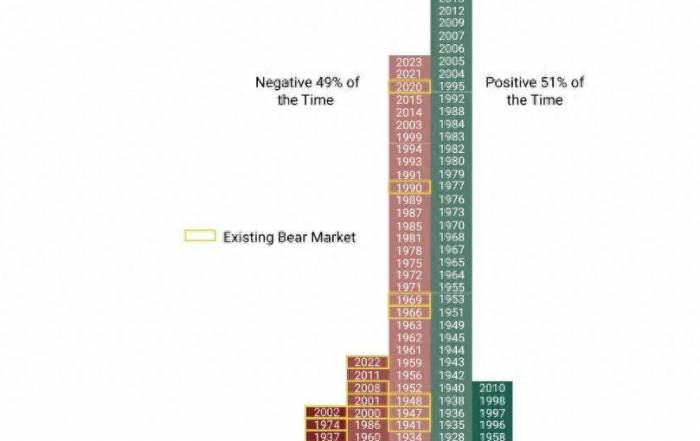The "curse" of September's decline seems unstoppable, and Scott Rubner, a Goldman Sachs expert on research capital flows who accurately predicted the pullback in U.S. stocks at the end of this summer, has turned his attention to it.
In a report released on Wednesday, September 4th, Eastern Time, Rubner, who is the Managing Director of Global Markets at Goldman Sachs, stated clearly at the beginning of the report: "From September 16th, I am bearish on U.S. stocks." The report noted that on the first trading day of September in the U.S. stock market, this Tuesday, he observed that market participants began to trade in advance with a bearish view.
"We have seen that clients act more quickly before the technical side of the market turns negative, rather than waiting until the middle of the month (to act). If (this) Friday's (U.S. non-farm) employment data is weak, the market may start to adjust. In the past 48 hours, I have received more inquiries about technical market updates than I have received all year."
Rubner said that he has been tracking capital flows for more than 20 years, and after the market turmoil on "Black Monday" on August 5th this year, the trading style has changed more quickly. The most common question investors ask is: Why has September always been a month with weak performance in the history of global stocks and risk assets?
Rubner's report traced past data and found that the second half of September is the two weeks when the S&P 500 index performs the worst in a year. The report pointed out that since 1928, nearly a century ago, in the last 11 trading days of September, the median return rate of the S&P has been negative for ten days. Capital flows can explain why September has become a weak month in the year.
The report shows that in the past four years, from September 2020 to September 2023, the S&P has fallen by at least nearly 4% each September, with declines of 4.87%, 9.34%, 4.76%, and 3.92%, respectively. The NASDAQ 100 index fell by 5.07%, 10.6%, 5.73%, and 5.72%, respectively, which is at least more than 5%. Rubner believes that this past performance may remind investors that they need to take risk aversion in September, the school opening season.

The report points out that as September begins, the systemic holding period of U.S. stocks has fully returned to normal, companies begin to enter the buyback quiet period where they are not allowed to repurchase, pension funds are well-supplied at the end of the quarter, and mutual funds make some important adjustments at the end of the fiscal year. The risk/Value at Risk (VAR) of U.S. stocks in September this year has exceeded the period of the past six U.S. election cycles. In addition, after the U.S. Labor Day, there is a feast on paper - this Tuesday, the supply of U.S. stocks reached 3.2 billion U.S. dollars, and the supply of high-grade bonds reached 43 billion U.S. dollars, the third-largest single-day scale in history, and the trading department of Goldman Sachs' trading desk is still active.
In terms of buybacks, the report mentioned that August and September are the two strongest months for buybacks in a year. Since the beginning of this year, the scale of corporate buyback authorization has reached a record 893 billion U.S. dollars. Listed companies have become the largest buyers of U.S. stocks. Goldman Sachs calculated that the recent buyback quiet period began on September 13th, and half of the companies will not be allowed to repurchase. Goldman Sachs expects that the demand for buybacks will decrease by 35% during the quiet period, and this week will reach the peak of corporate buybacks during the buyback window period.
In terms of pension funds, the report mentioned that before entering September, the capital flow of U.S. stocks has exceeded the previous five election cycles. The Milliman 100 pension fund index shows that the sufficiency rate of pension funds has reached 103%. Rubner said that he has been seeing pension funds turning to investment-grade credit bonds, while reducing equity risk, and using immunization strategies to reduce liability risk. Given the abundance of funds, pension funds have been reducing equity risk before the U.S. election.
In terms of mutual funds, the report stated that Goldman Sachs' research on 554 large mutual funds with a total stock asset of 3.7 trillion U.S. dollars found that October of this year is the last month of this fiscal year for most mutual funds, with funds at the end of the fiscal year accounting for nearly 22% of the total managed assets in October, followed by December, accounting for about 20% of the total managed assets. October being the end of the fiscal year may have an adverse impact on the price trend of popular mutual funds, or has already had an adverse impact, because funds that have performed poorly so far this year may sell off due to tax losses, and funds that have performed well so far this year may reduce their holdings or take profits.In summary, Rubner's fundamental perspective is that the weakness of the U.S. stock market in September has already been traded in advance by traders, with the November U.S. elections becoming a liquidation event for risk assets.